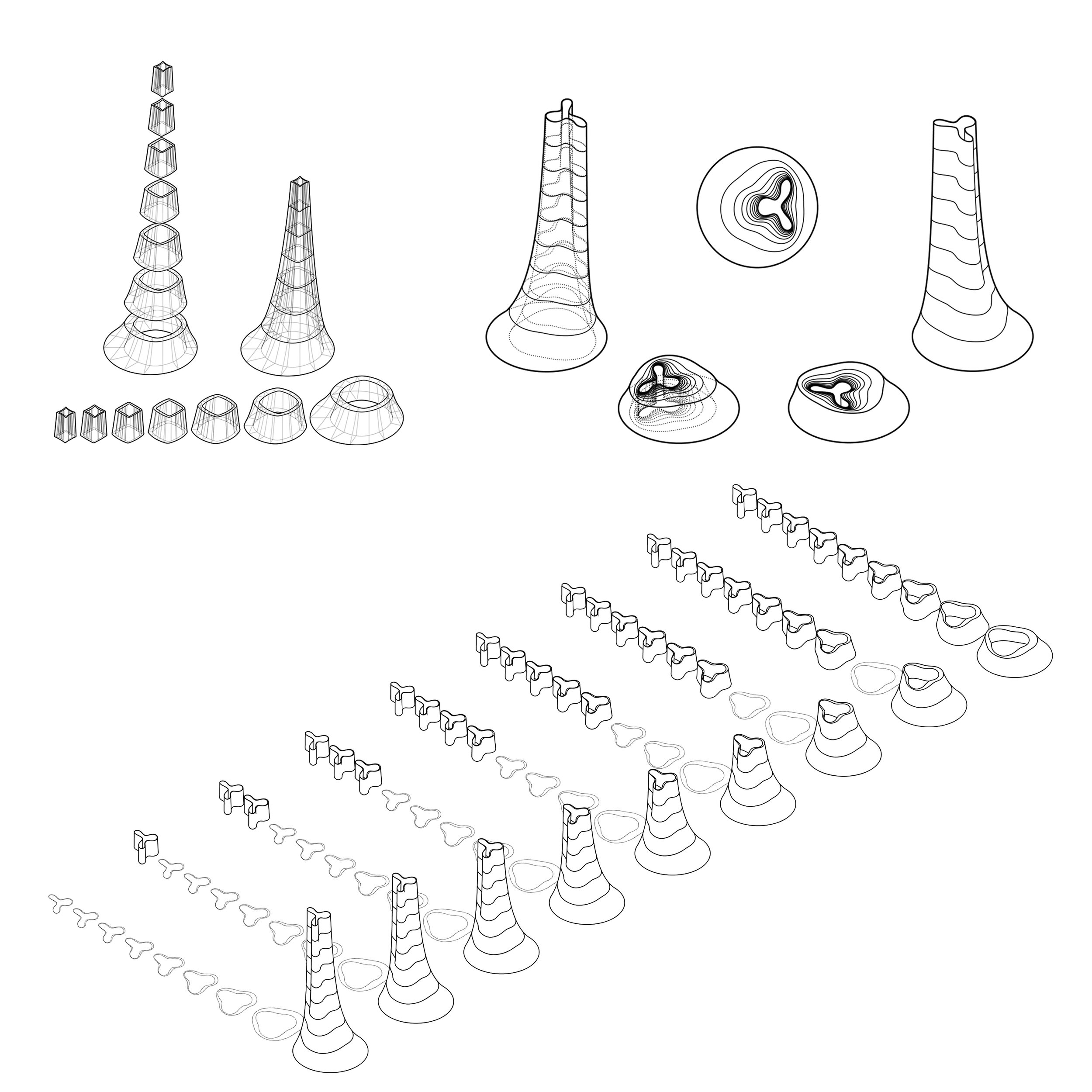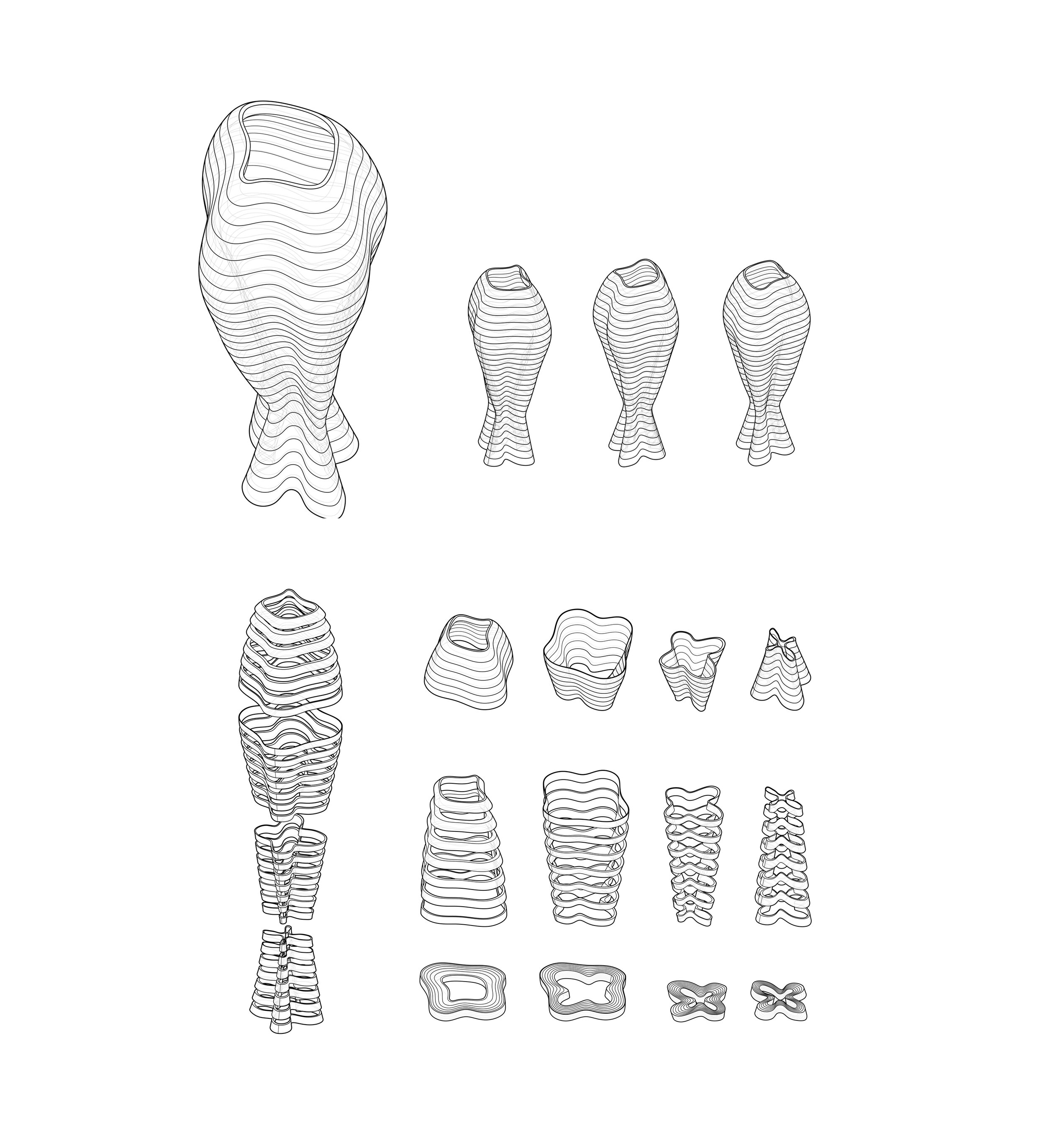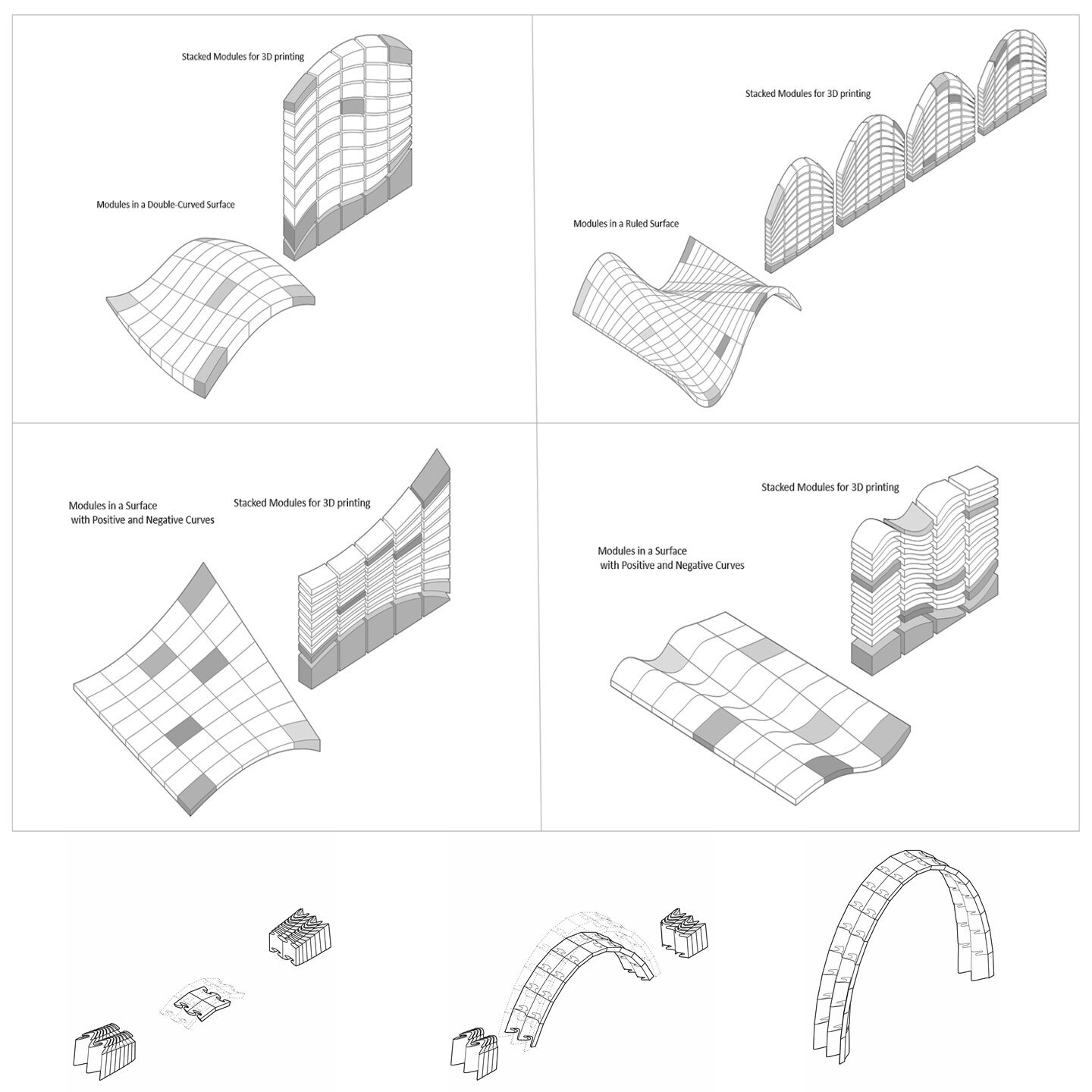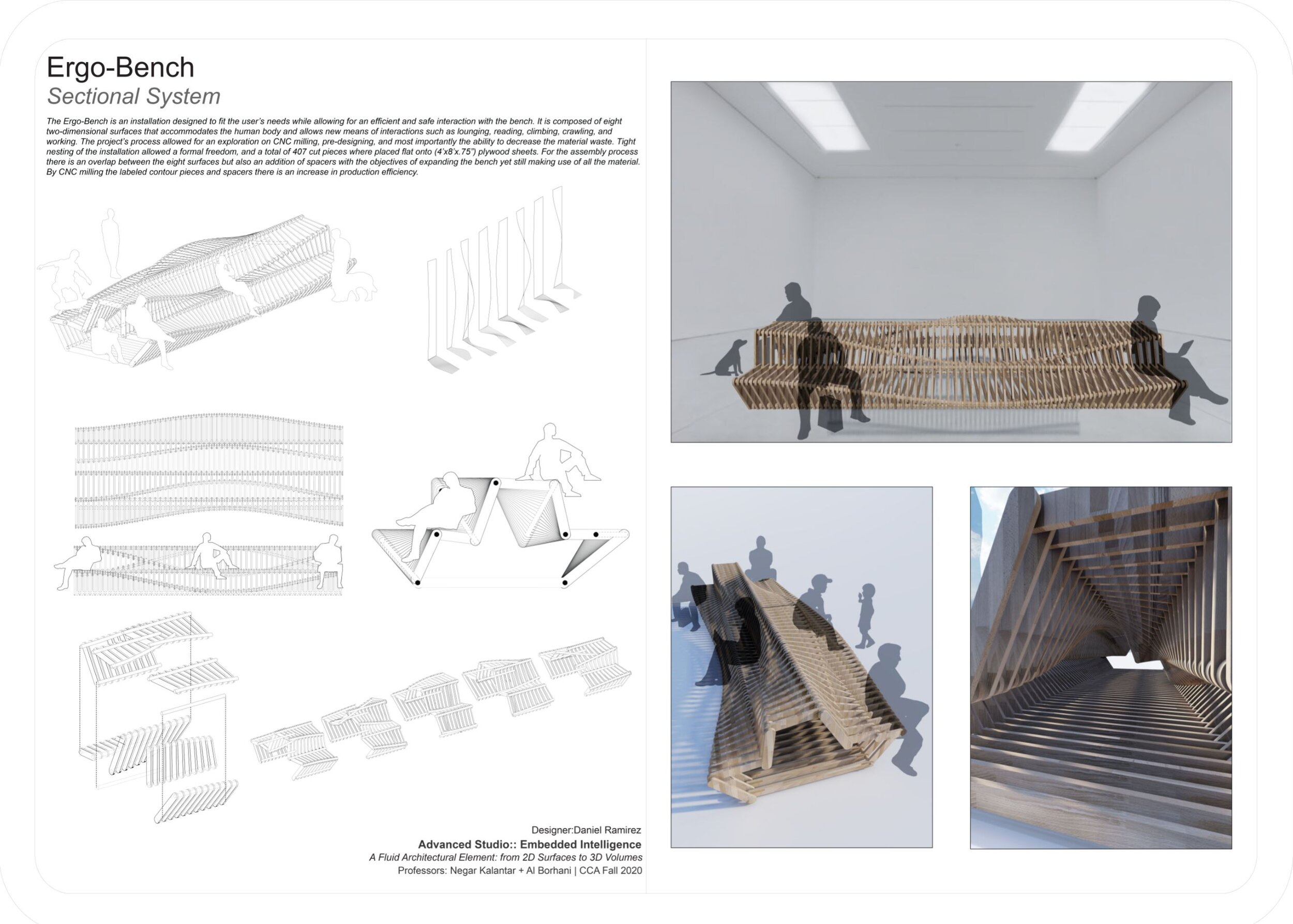Core Faculty: Negar Kalantar + Alireza Borhani
Date: Fall 2020
INTRO
During the last several decades, we have experienced two major digital revolutions in computation and communication. We are currently going through the third revolution that is connecting bits and atoms, bringing the digital world to the realm of the physical.
In architecture, the relationship between conception and production has evolved considerably. Despite the advances in digital fabrication, there is still a considerable gap between what we can draw and what we can make. At this point, the process of making a complex form is relatively expensive, time-consuming, and more importantly, often wasteful.
Embedded Intelligence:
Embedded Intelligence is based on the notion of intelligence embedded in tools and materials. The design system is founded on the intrinsic capabilities embedded in tools that relies upon the inherent properties of materials. The design strategy explored ways of exploiting these characteristics through nested fabrication.
Nested Fabrication:
The studio challenges students to expand their tectonic proficiencies in developing the design principles for nested fabrication. The main parameters of dividing a global geometry of a complex volume into stackable components are explored. By converting different formal, material, and technical restrictions into geometric constraints, the stacked components are divided in a way that the first component gives shape to the second.
COURSE STRUCTURE
The studio explores three methods of nested fabrication through three different projects:
Project 1
A Fluid Architectural Element: from 2D surfaces to 3D volumes
2D nesting
This project explores creating a fluid architectural element by going from 2D surfaces to 3D volumes. By using CNC milling the final elements contain doubly curved surfaces and have zero waste. By using 2D nesting, the front side of each strip is the exact same as the backside of the previous one.
Project 2
From a 3D Volume to 2.5D Nested Components
2.5D nesting
In Project 2, phase 1 explored the potentials of 2.5D nesting, going from 3D volumes to nested components. Volumes are either concave or convex and divided into stacks that can be printed within one another, known as the “Print in Print” method. This method of 2.5D nesting works because the inner surface of the bottom piece is congruent to the outer surface of the upper one. Pieces are able to slide vertically in and out of each other. This exploration helped lead the way for Phase 2.
In Phase 2, the principles of 2.5D nesting, paired with additive clay manufacturing, are used to create an engineered biome called city TREE. City TREE addresses air pollution by providing spaces for plants to grow on the structure. The project site is in the heart of San Francisco, located in the Salesforce Tower Plaza.
Project 3
A Nested Transportable Expo Pavilion
3D nesting
Project 3 explores 3D nesting in creating a nested transportable expo pavilion for the American Institute of Architects, for the 2023 Expo in Buenos Aires, Argentina. The process of 3D nesting will have its benefits in creating a temporary shell structure that can be assembled and disassembled for transportation and occupies minimal storage. Throughout the fabrication process, pieces can be 3D printed with clay, concrete, or any other paste, in stacks so that the lower components will act as support for the upper ones.
LECTURES + WORKSHOPS
A series of lectures and workshops supplemented course materials by introducing research on the course topics, expanding on material properties and diving deeper into the fabrication methods.
Presented by: Steve Thompson, Ed Coe, Nathan King (DDES), Hooman Koliji, Mehdi Farahbakhsh, Dr. Arash Adel, Powell Draper
Students: Venessa Davidenko, Londie Delgado, Sergio Esquinca, Maro Han, Hsiao Chun Hou, Woohyung Kim, Hsuan Fu Liu, Daniel Ramirez, David Rege, Ashley Rodriguez, Adrian Salinas, Mahshid Tabatabaei
Final Review: December 6, 2020, 3pm-6pm, ZOOM
https://embeddedintelligence2020.wordpress.com/
Project 3: A Nested Transportable Expo Pavilion
Project 2: From a 3D Volume to 2.5D Nested Components
Project 1: A Fluid Architectural Element: from 2D surfaces to 3D volumes
































